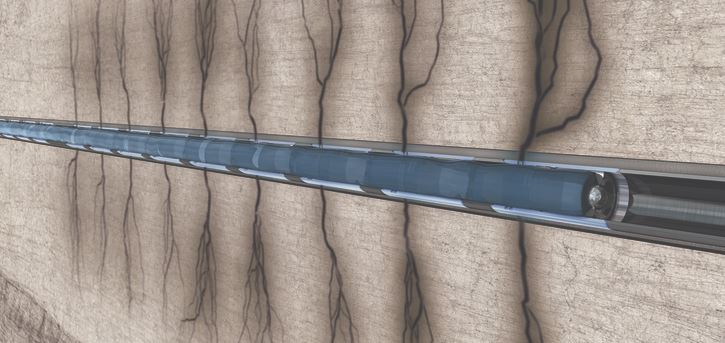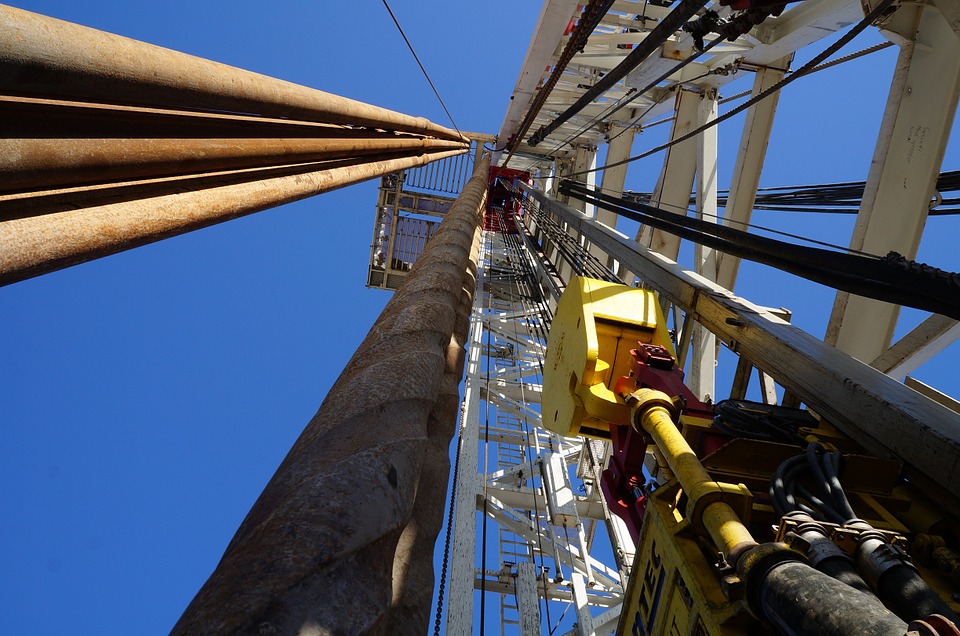
Jun 25, 2019
The upstream oil and gas industry is increasingly focused on cutting costs and improving recovery rates through radical innovation and digital transformation.
The Start-Up Tracker is a resource to help the upstream industry identify solution providers with specific solutions to industry challenges. The Start-Up Tracker provides a rich database of start-up companies that have a current industry application or an application for another industry that can be translated to upstream oil and gas.
Each issue contains detailed company profiles, an analyst viewpoint and an overall score for every start-up included in the issue. In addition, our clients receive guidance on potential acquisitions, investments, partnerships and implementation.
Companies Featured
Reckon Point
RocketFrac Services
SeekOps
Topics Covered
- Executive Summary
- Companies to Action
Innovation Target
RocketFrac Services – Company Profile
RocketFrac – Analyst Viewpoint & Company Demo Video
Reckon Point – Company Profile
Reckon Point – Analyst Viewpoint & Company Demo Video
SeekOps – Company Profile
SeekOps – Analyst Viewpoint & Company Demo Video
The Last Word
Scoring Methodology
in Press by— 360 Feed Wire
December 17, 2018 – 2:55 PM EST

Jun 20, 2019
This is not the first time we have heard of a game changing idea, RocketFrac Services Ltd a highly-driven Canadian company focused on the development of innovative well stimulation tools. RocketFrac has designed a break-through fracing technology allowing for economically efficient and environmentally friendly oil and gas recovery without the need for water or proppant.
Are the Days of large footprint frac fleets numbered? Currently fracking is the highest cost of oil recovery , higher than drilling. It makes sense that big oil is looking for cost cuts in the frac stimulation, aka completions. Time to look for another job?
January 9, 2019 By News
Acoustic Energy Fracking

Jun 15, 2019
An ever-growing catalog of water treatment and reuse technologies, intended to solve Hydraulic Fracturing Problem Number One, has prompted out-of-the box thinkers to ask themselves a tantalizing question: Do we have to use water in the first place?
Maybe not. First, a historical note: early oil well fracturing, using nitroglycerine “torpedoes” certainly doesn’t suggest visionaries at work. In fact, tales of the “torpedo men” of the day can be seen more easily as TV drama than as the march of technology.
But, march technology does, and this method has a modern-day successor: high-energy gas fracturing, a generic name for the technology of stimulating wells with propellant gas generators. Other names include tailored gas pulse loading, tailored gas pulse fracturing, and controlled pulse fracturing.
Propellant-type well stimulation devices have banged around the outskirts of the industry for many years. According to some proponents, when high explosives such as nitroglycerine detonate, they create a shockwave and high pressures that last only a few microseconds. Slower reaction time is believed to be crucial to success, and certain research demonstrates that high explosives enlarge the wellbore by crushing and compacting rock, resulting in a zone of residual compressive stress. Some experts argue that this zone, or “stress cage,” can reduce permeability in the near-wellbore region.
Subsonic deflagration. The propellants that have been used successfully in this application do not detonate supersonically; they “deflagrate” at subsonic velocities. Deflagration, as you know, is a rapid burning process that takes place without an outside source of oxygen. Propellants have energy densities approximating those of high explosives and are thus more common than any prime energy source other than nuclear. Propellant-type devices produce a high-pressure event lasting up to a few hundred milliseconds, as opposed to a few microseconds for high explosive well shots. Some proponents say this longer event time is the secret to producing multiple fractures and avoiding stress cage damage.
Although there are others, let’s take a look at what one company is doing to advance this technology. The vividly named RocketFrac Services claims its technology enables economically efficient and environmentally friendly oil and gas recovery, without water or proppant.
The technology employs a state-of-the-art propellant-based fracturing process that uses a proprietary solid rocket fuel to generate high-pressure gases for fracturing rock formations. The tool uses custom propellant formulations to achieve the optimum pressure-time history for every formation and well. These propellant formulations are developed in partnership with a partner experienced in solid rockets for space flight and munitions.
Mechanics of hydraulic vs. propellant fracturing. Although hydraulic and propellant fracturing are both based on the application of high pressures to the formation, research, as noted above, has shown that the time scales involved lead to a difference in the mechanics of fracture propagation. Here’s how the company contrasts the two methods:
Propellent fracturing:
• Solid propellant is ignited to generate a specific volume of gas. This controlled burn rapidly creates the high pressure required to create new fractures in the rock.
• Fractures are propagated by stress waves, which rebound from rock boundaries and isolate fractures to zone of interest.
• The high pressure rise rate creates an oval fracture zone of 4-8 radial fractures.
• Local disaggregation removes the need for proppant.
• Propellant fracturing generates 140,000 kPa (20,000 psi) in 10-1,000 milliseconds.
Hydraulic fracturing:
• Hydraulic fracturing introduces fractures along existing zones of weakness in the rock formation by pumping water into the wellbore under high pressure.
• Existing fractures are “lifted” open by water pressure. Permeability is more isolated and difficult to direct, as water will follow the path of least resistance. Fracture pathways are usually linear and expand in two radially opposing directions.
• It requires a proppant to hold fractures open.
• Hydraulic fracturing generates 35,000 kPa (5,000 psi) in 1-10 hr. In the company’s view, solid propellant is well understood and infinitely tailorable, unlike the physical limits on the pumping rate of water that restrict the capability of hydraulic fracturing. Propellant fracturing is also claimed to be the only well fracturing process that can be designed to anticipate the existing stress field and produce the desired fracture pattern. It can be easily modified or fabricated for different lithologies or pressure regimes. Additionally, a variable burn rate can be designed to create multiple stress waves, for more efficient fracturing.
But, kinks remain. As the company notes, current propellant fracturing methods have only made use of the high-pressure rise rates, but have not been able to take advantage of the other capabilities of solid propellant, due to an inability to confine the pressures to the target zone longer than a few milliseconds.
No doubt these limitations will be overcome. It’s too bad the action happens downhole; the image of a tool looking like a miniature Saturn V perched on a wellhead, with a countdown clock nearby, would be irresistible to most marketing departments.
• DON@TECHNICOMM.COM / For more than 30 years. Don Francis has observed the global oil and gas industry as a writer. editor and consultant to companies marketing upstream technologies.
World Oil• I JUNE 2017

Jun 11, 2019
Over a year ago, someone approached Annelise Freeman with a seemingly radical notion. What did she think about using rocket fuel to frack wells?
With more than 25 years experience as a geologist working in the oil and gas industry, Freeman was immediately intrigued by the concept. She began digging through the available research and discovered that the idea was not new. In the 1980s, Sandia National Laboratories in the U.S. had experimented with using solid rocket fuel in wells. Over 600 wells have been stimulated using the fuel over the years.
But those were all vertical wells. Could a similar technique apply to horizontal wells? More importantly, would companies even want to abandon tried and tested hydraulic fracturing methods? The question hinges on how strongly industry wants to tackle its water use.
In Alberta, seven million cubic metres of nonsaline water were used in hydraulic fracturing in 2016, according to the Alberta Energy Regulator (AER). While this represents just 6.6 per cent of the oil and gas industry’s total water use—oilsands mining was the largest user, at 70.5 per cent— the AER did note that the intensity of nonsaline water use in hydraulic fracturing in the province has increased by 35 per cent since 2013. In other words, the amount of water needed to produce one barrel of oil equivalent through hydraulic fracturing has been rising.
Check out the latest Oilweek now for insight into Canada’s oilpatch people, technology and trends.
READ OILWEEK NOW
As the president and chief executive officer of RocketFrac Services, a Calgary-based start-up developing a system for using solid rocket fuel in fracking, Freeman hopes to put to rest any concerns about the industry’s water use—by completely removing the need for water in the first place.
“What we have done is couple a proprietary rocket fuel with a sealing system to be able to deliver enough stress to the formation to provide a good fracture pattern and long fractures and to be able to do it selectively anywhere along the wellbore—with no water,” she says.
Interested in evolving technology for energy production? Read about it in Oilweek.
Mike Harcourt, RocketFrac’s chief operating officer and vice-president of technology, distinguishes the company’s system—dubbed PSI-CLONE—from the earlier models Freeman discovered during her research. The company’s fuel formulation and ignition pattern have been designed to create a more controlled pressure wave, and its custom-designed sealing system has been built to handle the high pressure, which can be four times as much as a regular hydraulic fracturing job. Previous propellant stimulation applications typically involved events lasting up to 500 milliseconds, while RocketFrac’s events should last up to 1,000 milliseconds while producing pressures of up to 20,000 PSI. The main products from the burn are ash and nitrogen gas, which is what creates the pressure needed to produce fractures—typically four to eight radial fractures, according to the company.
“Up to now, they didn’t have a lot of control over the process, but we’re taking control of it,” Harcourt explains. “We’re controlling the area where the pressure’s applied, how much pressure’s applied and over what time.”
Removing water from the process has significant implications for the logistics of fracking. The company says its method would require three to five personnel and just one coiled tubing unit, compared to the larger crews and numerous trucks required to supply and run a hydraulic fracture.
“If we want to run a comparison of CO2 emissions in terms of the number of trucks that have to go on and off the lease, your carbon consumption is huge with the transportation just to get set up before the frack, let alone run those big engines that pressure it up,” Freeman says. “Our system is a significant dent in the carbon footprint of fracking a well, a huge dent in the amount of water needed, and you even take the mining and transport of sand out of the equation.”
The reduction in personnel and the absence of water and sand should translate into cost savings, she says. While the company has not established its final pricing scheme yet, Freeman is confident it will come in at a lower cost than hydraulic fracturing.
Still, laypeople may balk at the thought of igniting rocket fuel inside a well. For many, the phrase “solid rocket fuel” conjures up images of a space shuttle soaring into the atmosphere on massive jets of flame. However, solid rocket fuel is a stable material. Rocket hobbyists can even ship it through the mail, Freeman notes.
“If we drop it on the ground, it has the consistency of a sort of soft candle. You can just pick it up. There’s no danger of it getting into groundwater because it is a solid, and the product from burning it is primarily nitrogen, nothing that is harmful,” she says.
Incorporated in February, RocketFrac is still in its early stages as a company, with just four people currently working full-time, including Freeman and Harcourt. Commercialization is expected within eight to 12 months, after the company finishes testing the fuel to more fully understand how it burns under pressure in different formations. Bench testing will begin later this summer in Manitoba, and RocketFrac is also talking to a company in Texas about testing PSI-CLONE in the Permian Basin.
“There’s an awful lot of interest in it. It’s just a matter of getting people past the idea that we’re creating a massive explosion under the ground,” Freeman says. “Not at all. It’s a controlled burn. There’s no explosion, no trying to readjust the earth’s crust.”
By Joseph Caouette |Sept. 5, 2017, 2:05 p.m.





